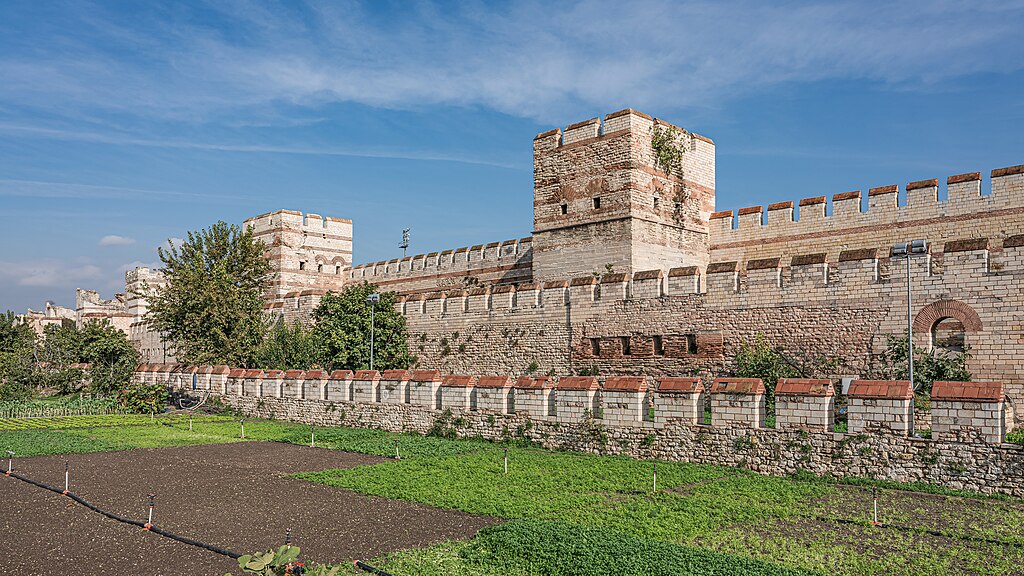Self-Guided Walking Tour of Istanbul Old Town (2025)
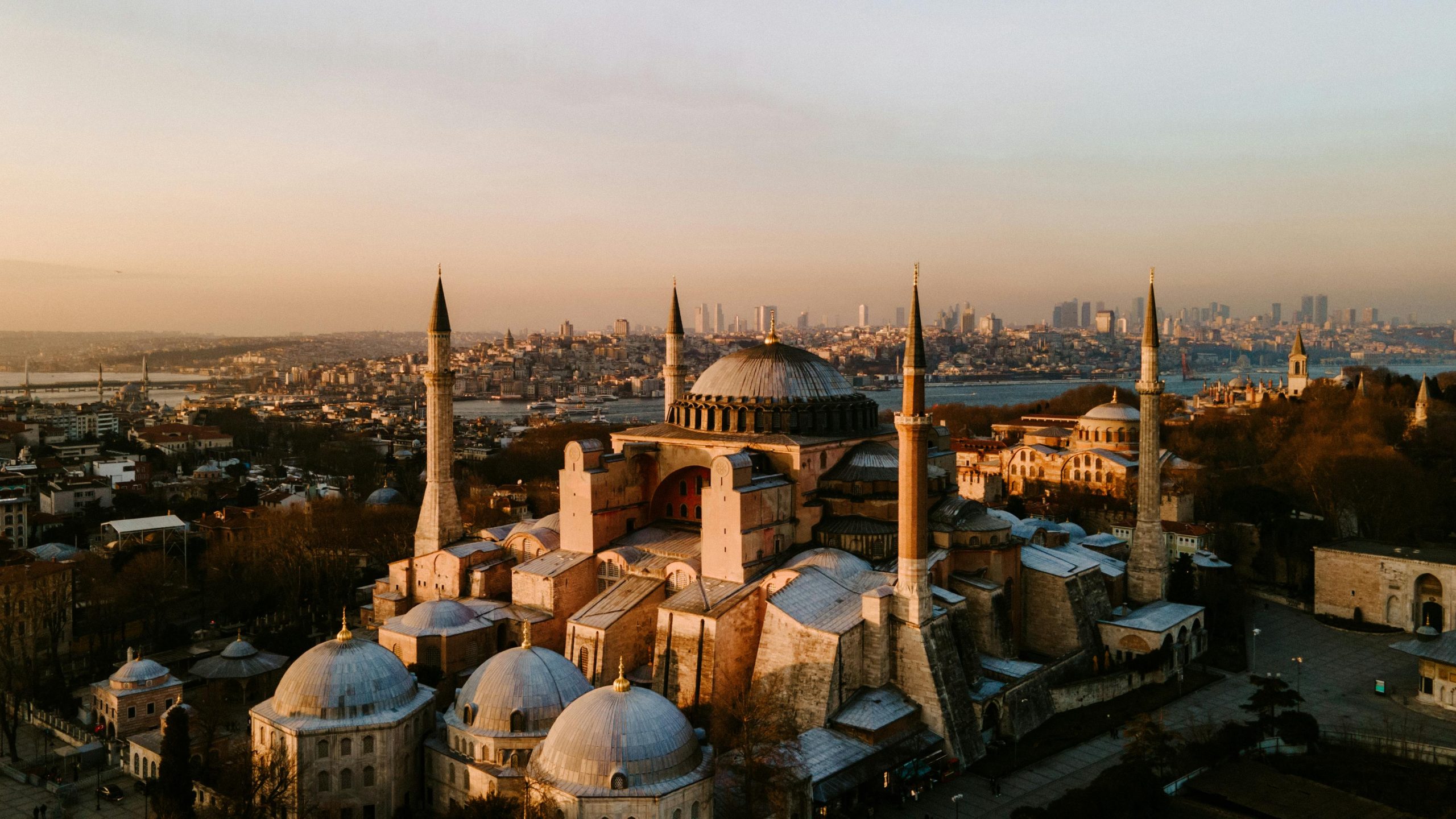
This website uses affiliate links which earn a small commission at no additional cost to you.
Few cities in the world blend time, culture, and legend quite like Istanbul. The Old Town — once the heart of Byzantine Constantinople and later the seat of the Ottoman Empire — is where empires rose, religions intertwined, and trade shaped continents. Within its ancient walls, every street corner whispers history: domes and minarets pierce the skyline, Roman columns share space with Ottoman fountains, and the scent of roasted chestnuts drifts through squares that have seen centuries of triumph and transformation.
A self-guided walking tour through Istanbul's Old Town allows you to trace this layered story at your own rhythm. Begin at Sultanahmet Square, the city's timeless core, where the Blue Mosque, Hagia Sophia, and the remains of the ancient Hippodrome still define the skyline. Wander through quiet courtyards, bustling bazaars, and narrow alleys that lead to monumental landmarks — each step connecting you to a different era of the city's epic past.
This journey offers more than just sightseeing; it's an immersion into the spirit of Istanbul itself. From the underground wonder of the Basilica Cistern to the dazzling halls of Topkapi Palace and the spice-laden air of the Egyptian Bazaar, this walk reveals the best things to see in Istanbul — experiences that capture the city's essence as both Europe and Asia, ancient and modern, sacred and worldly, all at once.
How to Get to Istanbul Old Town
By Air: Most international visitors arrive in Istanbul via Istanbul Airport (IST), the city's main hub located about 40 kilometers northwest of the Old Town. From there, travelers can reach Sultanahmet — the heart of the historic district — in around 45–60 minutes by taxi, private transfer, or airport shuttle. The Havaist Airport Bus offers a comfortable and budget-friendly option, with routes that stop near key central points like Beyazit and Sultanahmet Square. Alternatively, from the airport you can take the M11 metro line to Kağıthane, then transfer to M2 and T1 tram, which runs directly through the Old Town. For the best deals and a seamless booking experience, check out these flights to Istanbul on Booking.com.
By Train: For those arriving from other parts of Turkey or Europe, Sirkeci railway station — once the terminus of the legendary Orient Express — lies conveniently close to the Old Town's main attractions. You can use the official TCDD Taşımacılık website to check schedules, compare routes, and purchase tickets for Turkey's national and regional trains operated by TCDD. For a more streamlined experience (especially if you prefer an English interface or want to compare across countries), we recommend using Omio, which allows you to easily compare prices, schedules, and book train tickets across Turkey and the rest of Europe — all in one place. The Marmaray suburban rail line also connects the Asian and European sides of the city via an underwater tunnel, with stops such as Sirkeci and Yenikapı, both within walking distance of Sultanahmet. Trains from cities like Ankara and Eskişehir arrive at Söğütlüçeşme or Halkalı, from where you can transfer easily to the Marmaray line.
By Car: Driving to Istanbul Old Town is possible but not always recommended due to narrow streets, limited parking, and heavy traffic. Visitors entering the city via the O-1 or O-3 motorways can follow signs toward Fatih or Sultanahmet, where paid parking areas and private garages are available near Hagia Sophia and Gülhane Park. If you are looking to rent a car in Turkey I recommend having a look at Discover Cars, first, as they compare prices and review multiple car rental agencies for you. However, once you've arrived, it's best to explore the district on foot or by tram, as most of the Old Town is pedestrianized or restricted to local traffic.
By Bus: Intercity buses from across Turkey arrive at Esenler Otogarı, Istanbul's main bus terminal, located around 10 kilometers west of Sultanahmet. From there, the M1A metro line connects directly to Yenikapı, where you can switch to the T1 tram toward the Old Town. Long-distance buses are frequent, comfortable, and often an affordable way to reach the city from places like Ankara, Izmir, or Bursa.
Where to Stay in Istanbul Old Town
To make the most of visiting Istanbul and this walking tour, consider staying overnight at the center of the action — the Old Town itself. This historic district, known as Sultanahmet, places you within walking distance of the city's most iconic landmarks, from Hagia Sophia to the Blue Mosque and Topkapi Palace. Here, the charm of Ottoman-era streets blends with modern hospitality, offering a range of accommodations to suit every traveler.
In Sultanahmet, the heart of the Old Town, you'll find elegant boutique hotels and restored mansions that reflect Istanbul's layered history. A fine choice is Ajwa Hotel Sultanahmet, a luxurious property with Ottoman-inspired interiors, marble bathrooms, and panoramic views of the Marmara Sea. Nearby, Four Seasons Hotel Istanbul at Sultanahmet occupies a beautifully restored neoclassical building, offering refined comfort just steps from Hagia Sophia. For a more intimate experience, Hotel Amira Istanbul combines friendly service with easy access to the Blue Mosque and the Basilica Cistern.
Travelers seeking a livelier atmosphere may prefer to stay near Sirkeci or Eminönü, close to the Spice Bazaar and ferry terminals. Sirkeci Mansion offers a blend of traditional design and modern comfort, along with a Turkish bath and rooftop terrace overlooking Gülhane Park. A short walk away, Legacy Ottoman Hotel provides a grander stay in a heritage building dating back to the early 20th century. Those who prefer a quieter ambiance can head slightly uphill toward Cankurtaran, where Seven Hills Palace & Spa combines elegant rooms with sea views and easy access to both the Topkapi and the seaside promenade.
Whether you opt for a palatial stay or a cozy boutique hotel, sleeping within the walls of Istanbul's Old Town ensures that the treasures of this walking tour are right at your doorstep. From sunrise prayers echoing across the domes to twilight strolls past illuminated minarets, staying here lets you experience the city's magic from dusk till dawn.
1. Blue Mosque
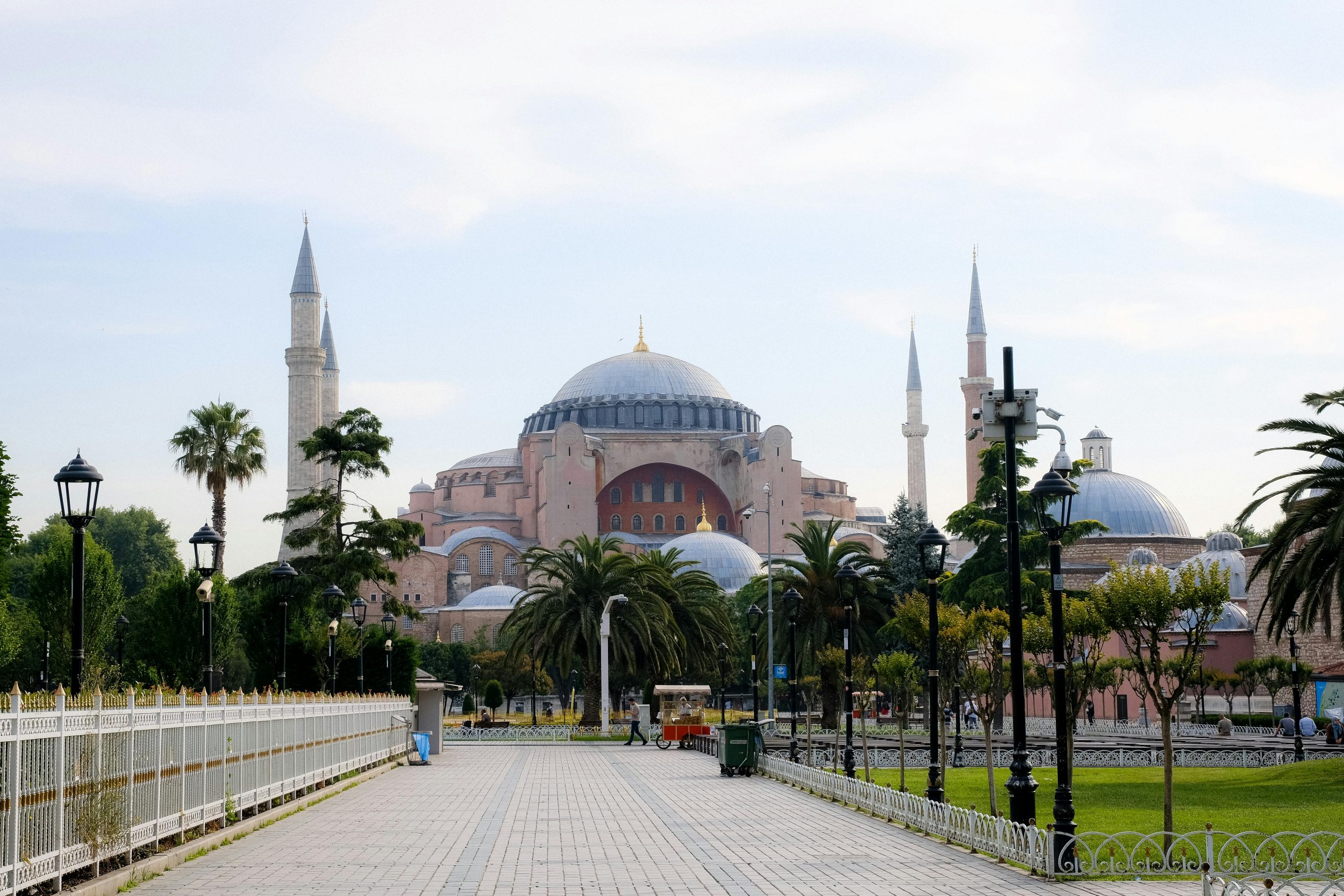
Few landmarks define Istanbul’s skyline like the Blue Mosque — officially the Sultan Ahmed Mosque — completed in 1616 under Sultan Ahmed I. With its six slender minarets and cascade of domes, it’s a masterpiece of Ottoman design and a symbol of the city’s religious devotion and imperial pride. The nickname “Blue Mosque” comes from the 20,000 İznik tiles that cover its interior, creating an ocean of turquoise and sapphire hues that shimmer in the filtered light.
Stepping inside feels like entering a sanctuary suspended between earth and heaven. The vast prayer hall glows softly under the dome, while elegant Arabic calligraphy winds across the walls. Though it’s one of the top sights in Istanbul, the mosque remains an active place of worship, and the rhythm of daily prayers gives the space a living pulse that transcends time. Visitors are reminded to dress modestly and respect prayer times, when the mosque briefly closes to tourists.
Outside, the mosque opens onto serene courtyards and gardens that connect seamlessly to Sultanahmet Square and Sultan Ahmet Park. From here, you can gaze north to Hagia Sophia — a view that perfectly captures the dialogue between the city’s Byzantine and Ottoman legacies. Whether seen by sunrise light or glowing under the evening lamps, the Blue Mosque is not just an architectural marvel, but a spiritual experience woven into the fabric of Istanbul’s soul.
Location: Blue Mosque, Cankurtaran, At Meydanı Cd, Fatih/İstanbul, Türkiye
Read more about Blue Mosque
2. Turkish and Islamic Arts Museum
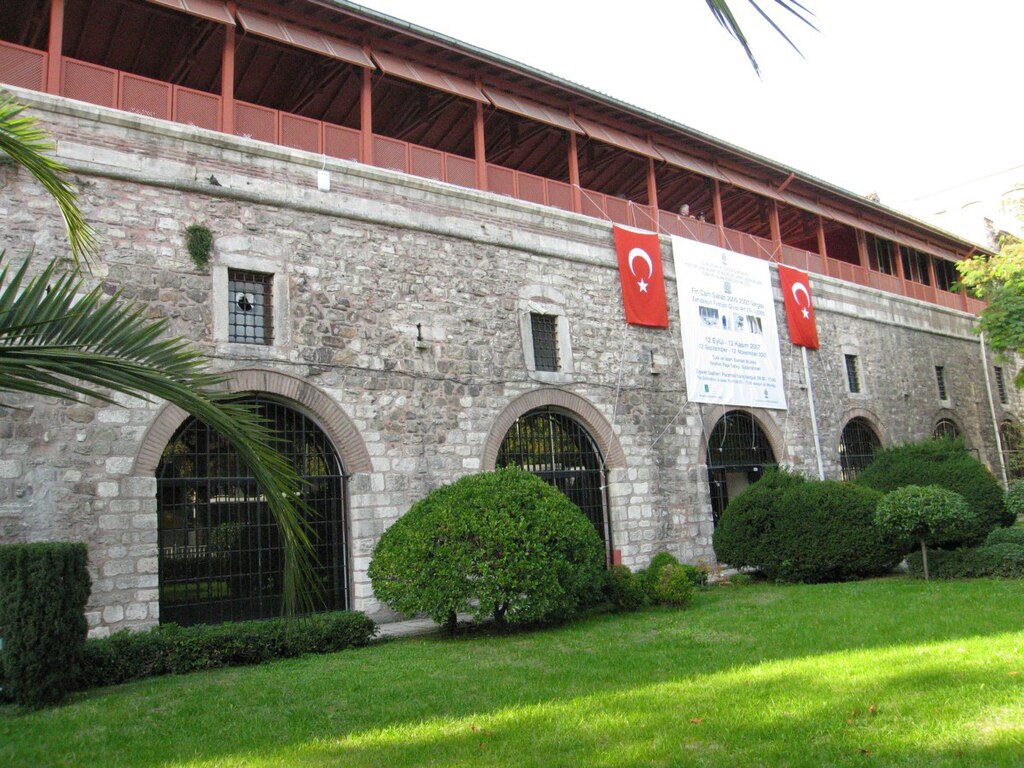
Nestled beside Gülhane Park and Topkapı Palace, the Istanbul Archaeological Museum is a sanctuary for history lovers and one of the best places to visit in Istanbul. Housing more than a million artifacts, it tells the sweeping story of civilizations that once flourished across the Ottoman Empire’s vast lands — from Mesopotamia and Egypt to Anatolia and the Aegean.
Founded in 1891 by Osman Hamdi Bey, the museum was among the first of its kind in the Ottoman world and remains one of the ten richest archaeological collections globally. Its three sections — the Museum of Archaeology, the Museum of the Ancient Orient, and the Tiled Kiosk Museum — offer a journey through time. Visitors encounter everything from Hittite tablets and Babylonian reliefs to Roman sarcophagi and Ottoman tiles, each piece a testament to human creativity and endurance.
The highlight for many is the Alexander Sarcophagus, carved with breathtaking detail and once thought to belong to Alexander the Great. But beyond its star exhibits, the museum’s quiet courtyards and colonnaded halls invite reflection. A visit here deepens one’s understanding of Istanbul’s layered history and its role as a crossroads of civilizations — making it a perfect finale to a walking tour of the Old Town.
Location: Turkish & Islamic Arts Museum, Binbirdirek, At Meydanı Cd, Fatih/İstanbul, Türkiye
Read more about Turkish and Islamic Arts Museum
3. Sultanahmet Square

Once the roaring heart of ancient Constantinople, Sultanahmet Square occupies the former site of the Roman Hippodrome, where thousands of cheering spectators once watched chariot races and imperial ceremonies. Today, the thunder of hooves has been replaced by the hum of tourists, street vendors, and the splash of fountains — yet the sense of grandeur lingers in the air. The square remains Istanbul’s central stage, where empires, faiths, and cultures meet under the open sky.
Walking through the square is like flipping through pages of a living history book. Here stand the Serpent Column, the Walled Obelisk, and the Egyptian Obelisk, remnants of Constantinople’s ancient glory. Each tells a story of victory, conquest, and resilience — reminders that this patch of ground has been a gathering place for nearly two millennia. Around it rise the city’s greatest monuments: Hagia Sophia, the Blue Mosque, and the Museum of Turkish and Islamic Arts, all within a few minutes’ walk.
Today, the square is more than a relic — it’s a living, breathing crossroads of Istanbul life. Locals lounge on benches, street cats nap in the sun, and the scent of roasted chestnuts mingles with the call to prayer echoing from nearby minarets. It’s one of the best places to visit in Istanbul, whether you’re beginning a walking tour or simply pausing to watch the world drift by in one of the most storied public spaces on Earth.
Location: Sultanahmet Square, Binbirdirek, Sultan Ahmet Parkı, Fatih/İstanbul, Türkiye
Read more about Sultanahmet Square
4. Great Palace Mosaic Museum

Tucked beneath the Arasta Bazaar near the Blue Mosque, the Great Palace Mosaic Museum offers a quiet window into the grandeur of Byzantine Constantinople. It preserves part of the floor from Emperor Constantine’s Great Palace, dating back to the 5th and 6th centuries, once the imperial residence of the Eastern Roman rulers. The mosaics — discovered only in the 20th century after a fire — lay hidden for more than a thousand years beneath later Ottoman buildings.
Inside, visitors encounter a stunning mosaic pavement composed of more than 40,000 tiny stones, stretching across nearly 2,000 square meters. The scenes come alive with color and imagination: mythological creatures, hunters chasing wild beasts, and daily life in ancient Byzantium. Unlike purely religious mosaics, these works celebrate nature and human vitality, revealing a more personal side of imperial art.
The museum’s intimate scale makes it a pleasant contrast to Istanbul’s larger attractions — a place where history feels close and tangible. Its dimly lit galleries and preserved ruins evoke the quiet dignity of the palace that once stood above. For those exploring the Old Town, this museum is often visited on walking tours of Istanbul and provides a vivid glimpse into the luxurious world that once shaped the heart of Constantinople.
Location: Great Palace Mosaics Museum, Sultan Ahmet, Torun Sokak, Fatih/İstanbul, Türkiye
Read more about Great Palace Mosaics Museum
5. Sultan Ahmet Park

Framed by the Blue Mosque to the south and Hagia Sophia to the north, Sultan Ahmet Park serves as the calm, green heart of Istanbul’s historic quarter. It’s where ancient empires once built bathhouses and temples, and where modern travelers now pause to soak up one of the world’s most iconic urban views. Once home to the grand Baths of Zeuxippus, later replaced by Ottoman gardens and fountains, this park has witnessed every era of the city’s transformation.
At its center lies the great fountain, a favorite photo spot that perfectly frames the silhouettes of the two world-famous monuments on either side. The park is dotted with flowerbeds, benches, and friendly stray cats who seem to consider it their personal kingdom. At sunrise, it’s peaceful and ethereal; by evening, it glows with the golden light of minarets and domes reflected in the water jets.
The park’s eastern edge is home to the Ayasofya Hurrem Sultan Hamamı, an elegant 16th-century bathhouse built by the wife of Suleiman the Magnificent. Here, history meets indulgence — visitors can still enjoy a traditional Turkish bath experience amid marble chambers and soft candlelight. Whether you come to rest, photograph, or simply watch Istanbul in motion, Sultan Ahmet Park is a great place to visit on a walking tour of the city.
Location: Sultan Ahmet Park, Cankurtaran, At Meydanı Cd, Fatih/İstanbul, Türkiye
Read more about Sultan Ahmet Park
6. Hagia Sophia
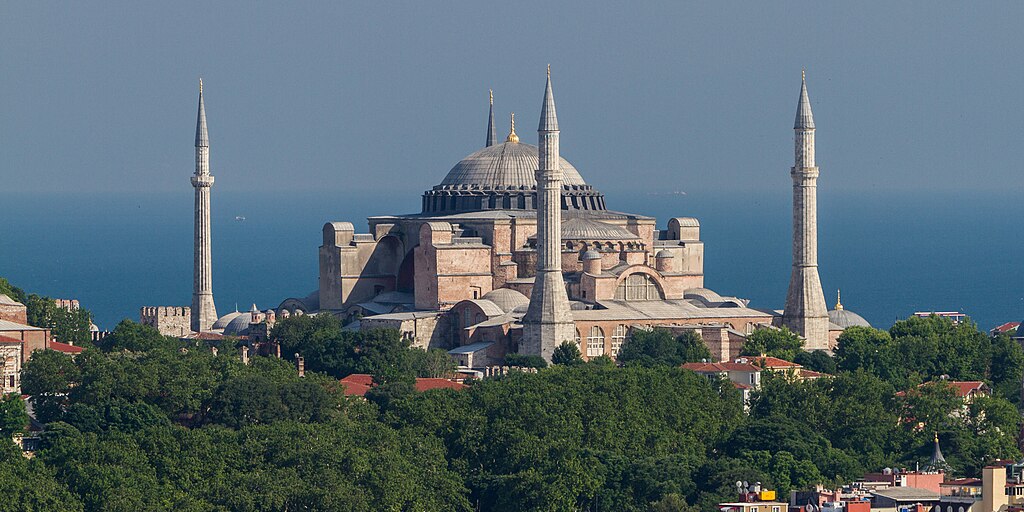
Few buildings in the world have witnessed as many transformations as Hagia Sophia. Built in the 6th century by Emperor Justinian I, it began as the largest cathedral in Christendom, its vast dome said to hang from heaven itself. For nearly a thousand years, it served as the spiritual heart of the Byzantine Empire — a place where emperors were crowned and pilgrims awed by its glittering mosaics and golden light.
In 1453, when Sultan Mehmed II conquered Constantinople, Hagia Sophia became an imperial mosque. The Ottomans added minarets, calligraphic panels, and Islamic motifs, merging two great traditions into one breathtaking masterpiece. Today, this architectural symphony of domes, arches, and mosaics still evokes the grandeur of both worlds. Its blend of Christian iconography and Islamic artistry makes it one of the must-see places in Istanbul.
Standing beneath its 55-meter-high dome, visitors feel the full weight of history and the genius of human creation. Outside, the building’s weathered stone and towering minarets dominate the skyline, while inside, the whisper of centuries lingers in every corner. Hagia Sophia is more than a monument — it’s the embodiment of Istanbul itself, timeless, resilient, and eternally captivating.
Location: Hagia Sophia, Sultan Ahmet, Ayasofya Meydanı, Fatih/İstanbul, Türkiye | Hours: Tuesday–Sunday, 9:00 AM–6:30 PM (closes earlier in winter); last entry 1 hour before closing. | Price: Around €1.50 (25 TL). | Website
Read more about Hagia Sophia
7. Fountain of Ahmed III

Facing the entrance to Topkapı Palace, the Fountain of Ahmed III stands as one of Istanbul’s most elegant Ottoman monuments. Built in 1728 during the Tulip Era — a time of cultural revival and artistic flourishing — the fountain represents the shift toward more decorative, European-influenced Ottoman architecture. Its delicate floral motifs, poetry-inscribed panels, and graceful domed roof create a harmonious blend of beauty and purpose.
Historically, the fountain was both a public water source and a social hub. Locals gathered here to fill their vessels, rest in the shade, and share conversation while admiring the artistry of its marble carvings and colorful tiles. The four façades each feature a small drinking fountain, with water once drawn from an octagonal basin hidden inside the structure.
Today, the Fountain of Ahmed III continues to enchant visitors as a jewel of Ottoman craftsmanship. Standing between Topkapı Palace and Hagia Sophia, it’s often visited on walking tours of Istanbul, serving as a tranquil reminder of the city’s refined artistic past. Its intricate calligraphy and detailed ornamentation make it a delight for photographers and history enthusiasts alike.
Location: Mimar Sinan, Fountain of Ahmed III, Üsküdar/İstanbul, Türkiye | Hours: Accessible 24 hours daily. | Price: Free; the fountain is outdoors.
Read more about Fountain of Ahmed III
8. Topkapı Palace
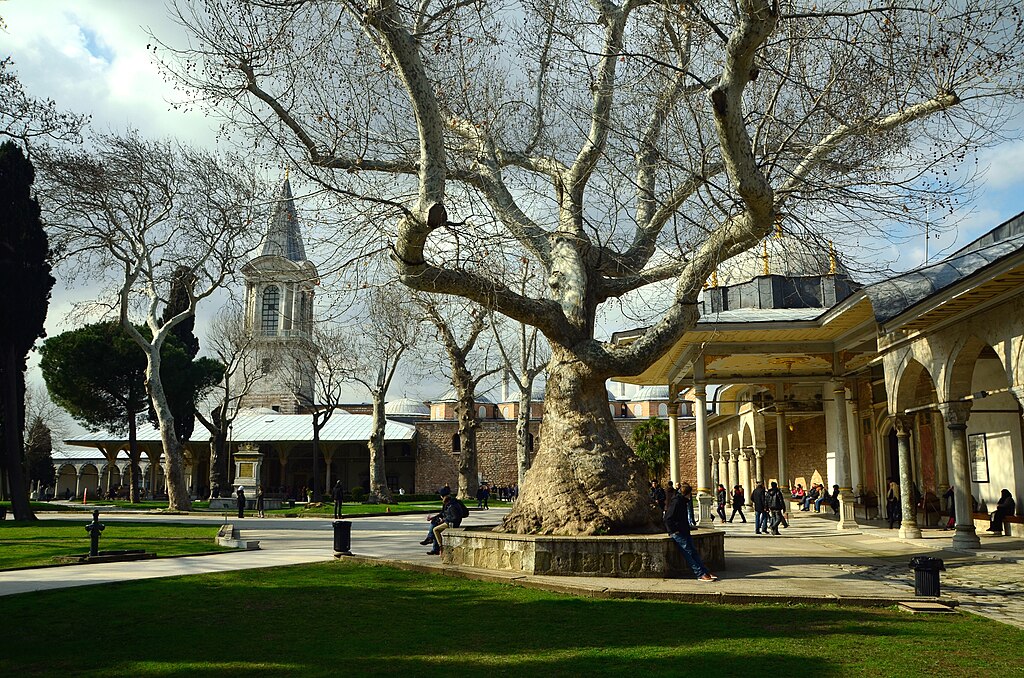
Perched on the tip of Istanbul’s historic peninsula, Topkapı Palace was the nerve center of the Ottoman Empire for nearly 400 years. Commissioned by Sultan Mehmed II after his conquest of Constantinople in 1453, the palace functioned as both royal residence and administrative headquarters. With its courtyards, pavilions, and gardens overlooking the Bosphorus, it radiates the opulence and ceremony of an empire that once ruled vast territories across three continents.
Unlike the grand European palaces of the same era, Topkapı is a sprawling complex rather than a single building. Its gates lead visitors from one courtyard to another — from the Imperial Council Hall to the treasury, the kitchens, and the sacred relics of Islam. The Harem, once home to the sultan’s family and concubines, is among the most fascinating sections, filled with intricately tiled chambers and hidden stories of power, intrigue, and influence.
Today, Topkapı Palace is one of the top attractions in Istanbul and a UNESCO World Heritage Site. Whether you’re admiring the jeweled daggers in the treasury or the panoramic views from the fourth courtyard, every corner of the palace whispers stories of imperial splendor. It’s the crown jewel of any walking tour through the Old Town — a place where history feels vividly alive.
Location: Topkapi Palace Museum, Cankurtaran, Babı Hümayun Cad, Fatih/İstanbul, Türkiye
Read more about Topkapi Palace
9. Istanbul Archaeological Museum

Location: Istanbul Archaeological Museums, Cankurtaran, Fatih/İstanbul, Türkiye | Hours: Daily 9:00 AM–5:00 PM (until 7:00 PM from April to October); last ticket sold 30 minutes before closing. | Price: Approximately €0.30 (10 TL). | Website
Read more about Istanbul Archaeological Museum
10. Basilica Cistern

Hidden beneath the busy streets near Hagia Sophia, the Basilica Cistern reveals a mysterious, dreamlike world built in the 6th century under Emperor Justinian I. Once supplying water to the Great Palace and nearby buildings, this vast underground chamber — supported by 336 marble columns — feels more like a subterranean cathedral than a utility structure. The play of dim light, soft echoes, and reflections on the shallow water make it one of the most atmospheric sites in Istanbul.
The cistern’s engineering brilliance lies in its simplicity: a series of reused columns, many from earlier Roman temples, arranged in perfect symmetry to hold a vaulted ceiling. Two of its most famous columns rest on carved Medusa heads — one sideways, one upside down — adding a mythical touch to this underground wonder. Their origin remains a mystery, though legend claims they were placed that way to nullify the power of the gorgon’s gaze.
Today, the Basilica Cistern is one of the top attractions in Istanbul, drawing visitors with its haunting beauty and cinematic aura. Its cool air and flickering lights offer welcome relief from the city heat above. Whether you come for history, architecture, or pure ambiance, this ancient reservoir never fails to leave a lasting impression.
Location: Basilica Cistern, Alemdar, Yerebatan Caddesi, Fatih/İstanbul, Türkiye | Hours: Daily, generally from 9:00 AM to 7:00 PM. | Price: Around €20 (subject to change). | Website
Read more about Basilica Cistern
11. The Stone of Million
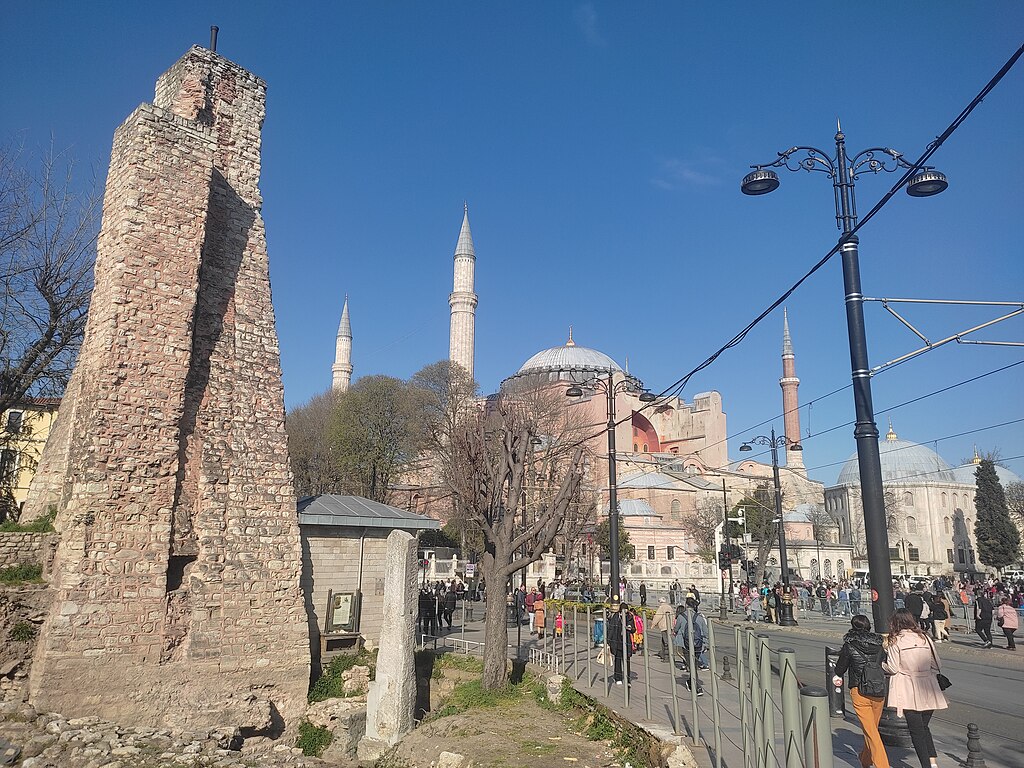
Standing quietly near Hagia Sophia, the Stone of Million is one of those modest but powerful relics that remind visitors of Istanbul’s ancient grandeur. In the 4th century, Emperor Constantine the Great built this triumphal gate as the “zero-mile marker” of the Byzantine world — the point from which all roads of the empire were measured. Much like Rome’s Milliarium Aureum, it symbolized Constantinople’s status as the new center of the world, the beating heart of an empire that stretched across continents.
Though only a fragment of the original monument survives today, its importance remains immense. In its prime, the Stone of Million stood beneath a domed arch adorned with statues of Constantine and his mother Helena, flanked by deities and crowned by a gleaming cross. It once marked the starting point for imperial processions and pilgrimages, as well as the axis for mapping distances to other great cities of the empire — from Antioch to Alexandria and beyond.
For centuries, this unassuming corner of Sultanahmet has witnessed the rise and fall of civilizations. Even after the Ottomans took the city, the Stone continued to represent the spirit of connection — the bridge between past and present. It’s one of the top sights in Istanbul for those fascinated by the layers of history beneath their feet, and a great place to visit on a walking tour of Istanbul, linking the Roman, Byzantine, and Ottoman stories that define this city.
Location: The Stone of Million, Alemdar, Divan Yolu Caddesi, Fatih/İstanbul, Türkiye
Read more about Stone of Milion

Moira & Andy
Hey! We're Moira & Andy. From hiking the Camino to trips around Europe in Bert our campervan — we've been traveling together since retirement in 2020!
This website uses affiliate links which earn a small commission at no additional cost to you.
Walking Tour Summary
Distance: 3 km
Sites: 11
